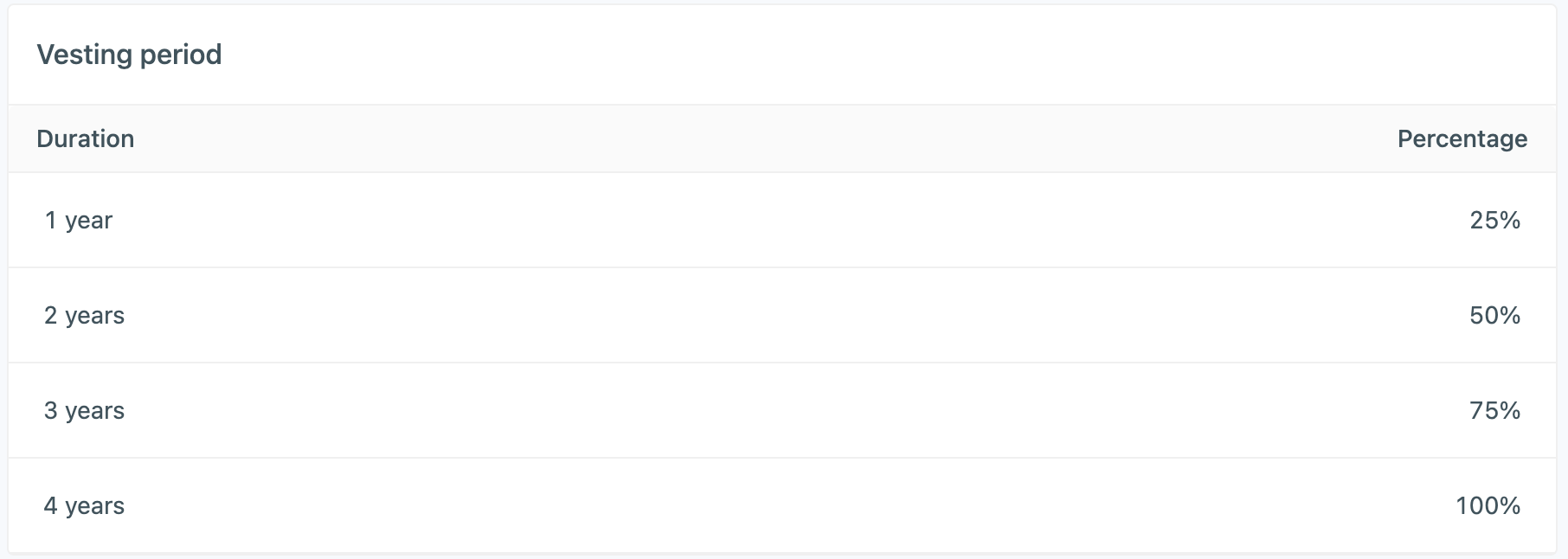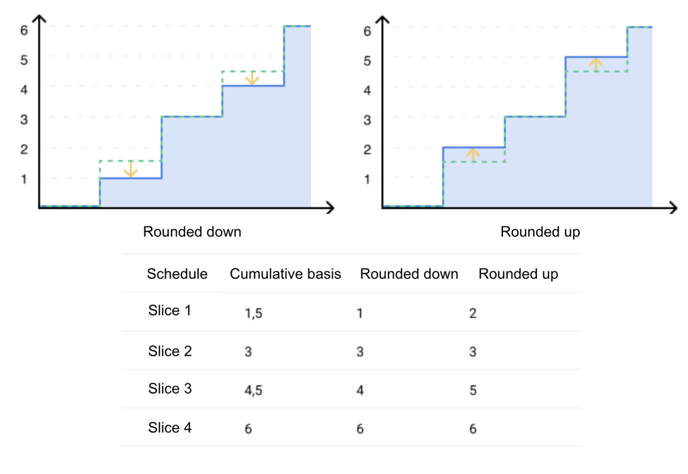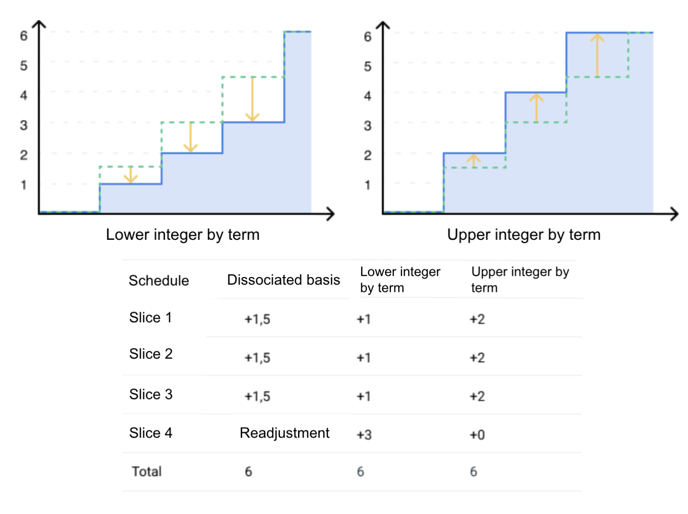Vesting schedule: which rounding rule should you apply?
Every term, a certain percentage (and not an absolute value) is acquired, which can sometimes equal a decimal value.
Financial securities being undivisible, the vesting schedule needs to define a rounding rule.
Example
The following vesting schedule has 4 terms of 25% (one slice per year) 
For a grant of 6 stock-options, some terms will not equal to a positive integer, therefore a rounding rule in necessary: 
Rounding-up to the closest value
The rounding-up method that is the closet to the theoretical value, is the cumulative basis one: 
With this technique, it is not necessary to round-up all the values, only the ones that do not fall right.
Rounding-up to the nearest integer by term
This rounding-up method moves further away from the theoretical value. However, it allows to have identical terms, with the exception of the last one, which differs from the others in order to readjust the cumulated error: 
With this technique, the difference between the theoretical value and the calculated value increases over time, before being adjusted at the end of the vesting.